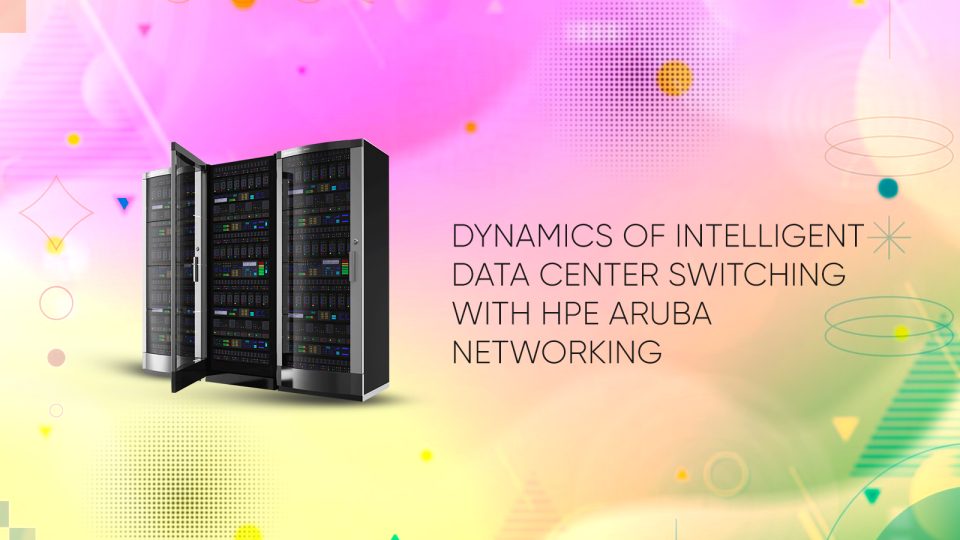As the data center continues to evolve into the center of organizations, the demands placed on its network infrastructure have grown exponentially. Traditional data center switching solutions often rely on manual configurations and siloed management tools that are struggling to keep pace with today’s data centers’ increasing complexity and agility requirements.

Intelligent data center switching emerges as a transformative approach, harnessing the power of automation, artificial intelligence, and machine learning to revolutionize network management and optimization. This paradigm shift helps IT teams grapple with operational complexity, slow service delivery, and challenging service-level agreements (SLAs).
Challenges in Traditional Data Center Switching
Traditional data center switching methods present several challenges that impede operational efficiency and hinder seamless network management. The foundational structure of these centers, built upon siloed infrastructure layers and purpose-built hardware, contributes to fragmented management, resulting in intricate deployment models and operations. The challenges in traditional data center switching include:
Operational Complexity: Organizations struggle with disparate network architectures and many management tools. This diversity encompasses multiple switching hardware platforms, operating systems, and complex licensing or subscription plans. And the heterogeneity amplifies operational complexities, making unified management a daunting task.
Slow Service Delivery and SLAs: This complexity translates into prolonged lead times for service delivery. Due to operational friction, IT departments expend significant time and effort on infrastructure requests and manual tasks. Expecting a rapid, cloud-like experience, stakeholders are delayed due to these inefficiencies.
Troubleshooting Challenges: A critical drawback in traditional data center setups is the lack of comprehensive visibility across physical and virtual networks. This absence of overarching visibility consumes approximately 70% of IT’s time in identifying and diagnosing issues within the data center. The resulting inefficiency severely hampers timely issue resolution and overall network performance.
Rise of Intelligent Data Center Switching
In today’s data-driven world, the data center orchestrates the flow of information that powers business operations. However, the increasing complexity of data center networks and the growing demand for agility and reliability pose significant challenges for IT teams. Traditional network switching solutions often fail to address these challenges, leading to operational complexity, slow service delivery, and difficulties meeting service-level agreements (SLAs).
Taming the Untamed Network
The intricate web of servers, storage devices, and applications within data centers presents a complex management landscape. Traditional switching solutions often rely on manual configurations and siloed management tools, making gaining a holistic view of the network and identifying potential issues difficult. This fragmented approach leads to increased operational complexity, hindering IT teams’ ability to manage and optimize the network efficiently.
Impeding Agility and Innovation
The pace of business today demands rapid deployment of new services and applications to stay ahead of the competition. However, traditional switching solutions often fall short of supporting this agility, leading to delays in service delivery and hindering innovation. This lack of agility can significantly impact an organization’s ability to respond to changing market demands and customer needs.
Under Pressure to Deliver
Organizations face increasing pressure to meet stringent SLAs, ensuring consistent performance and uptime for their critical applications. Traditional switching solutions often lack the visibility and control required to proactively identify and resolve potential issues, challenging maintaining SLAs and avoiding costly downtime.
Intelligent Data Center Switching
Intelligent data center switching has emerged to address these challenges. This approach leverages automation, artificial intelligence, and machine learning to transform the network into a responsive and intelligent system capable of self-optimizing and adapting to changing demands.
HPE Aruba Networking: At the Forefront of Intelligent Switching
HPE Aruba Networking stands out as a pioneer in intelligent data center switching, offering solutions that empower IT teams to overcome the challenges of operational complexity, slow service delivery, and SLAs. Aruba’s intelligent switching solutions are built on a foundation of AI and ML, enabling them to:
- Automate network management tasks, reducing operational complexity and freeing up IT teams to focus on higher-value initiatives.
- Proactively identify and resolve network issues, ensuring consistent performance and uptime and preventing costly downtime.
- Dynamically optimize network traffic, ensuring critical applications receive the bandwidth needed to meet SLAs.
Benefits of Intelligent Data Center Switching
- Enhanced Agility and Scalability: Intelligent Data Center Switching by HPE Aruba Networking delivers an unparalleled advantage through streamlined ITOps, accelerating provisioning, and saving precious time. By embracing a distributed services architecture design, complexities within data centers are reduced, amplifying automation, integration, and fortifying security measures. This approach simplifies operations and ensures scalability for evolving business demands.
- Optimized Operations through Automation: Its microservices-based architecture ensures uniformity in operations across all switches, whether in data center or campus environments. HPE Aruba Networking stands out due to its consistent architecture, fostering a cloud-like operational experience enterprise-wide. This uniformity simplifies and automates IT operations, providing a standardized approach that enhances efficiency and reduces manual intervention.
- Accelerated Service Delivery: Leveraging the robust AOS-CX-based automation framework, our network orchestration solution resolves critical challenges data centers and IT administrators face. This solution alleviates manual and siloed activities in IT service provisioning across compute, virtualization, storage, network, and security infrastructure. It paves the way for accelerated service delivery, aligning with the demand for swift, efficient operations in today’s dynamic business landscape.
- Holistic Integration of Resources: Seamlessly extending connectivity to existing server and storage solutions ensures a consistent user experience and operating model. HPE Aruba Networking’s integrations with HPE and ecosystem partners cover a broad spectrum of compute, storage, HCI, and cloud offerings. This includes notable collaborations with HPE ProLiant servers, Nimble dHCI, Synergy, SAP HANA, VMware, Nutanix, and HPE GreenLake Hybrid Cloud. This comprehensive integration further enhances operational efficiency and ensures a cohesive infrastructure experience across diverse environments.


